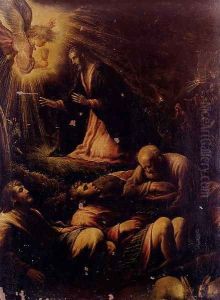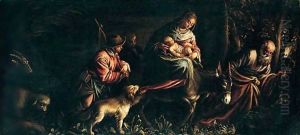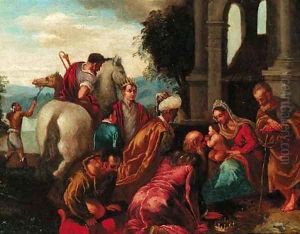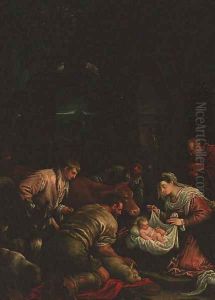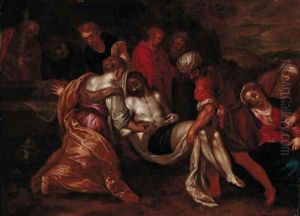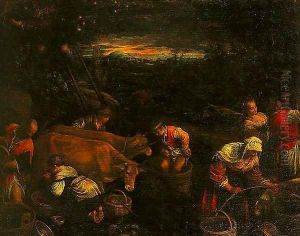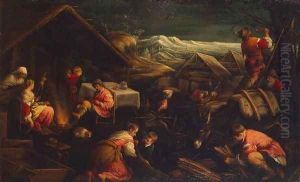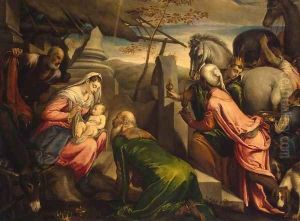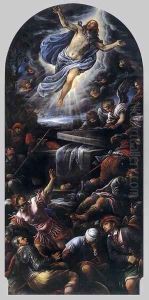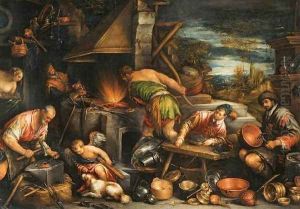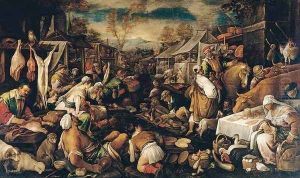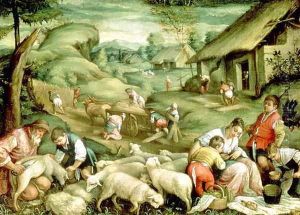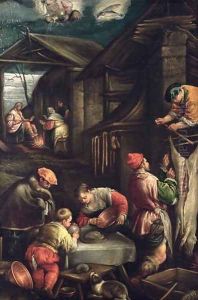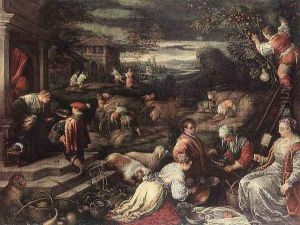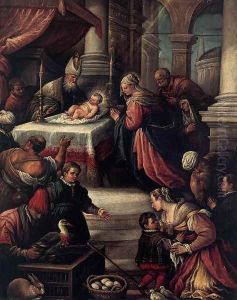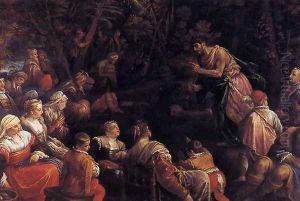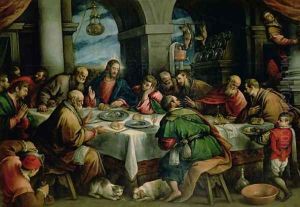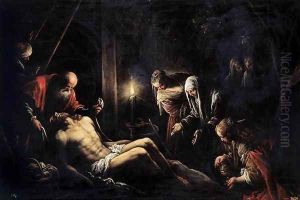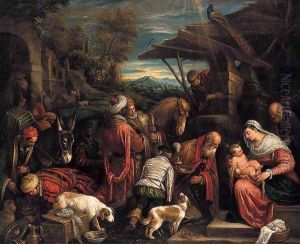Francesco, II Bassano Paintings
Francesco Bassano the Younger, also known as Francesco II Bassano, was an Italian painter of the Renaissance period. Born in Bassano del Grappa, Veneto, in 1549, he was the eldest son of Jacopo Bassano, who was also a famed painter, and his father's influence was a significant factor in Francesco's artistic development. The Bassano family was known for their painting workshop which became one of the most prolific in Venice.
Francesco trained under his father, Jacopo, and his style is largely indistinguishable from that of his father's, making their works sometimes difficult to attribute. He is known for his landscape paintings and for his skill in rendering light and atmosphere. His works often depicted pastoral scenes, religious subjects, and portraits infused with a sense of naturalism.
Francesco became involved in the running of the Bassano workshop along with his brothers. After his father's death, he took over the workshop and continued the family tradition of painting. His work was well received and he became known for his ability to merge Venetian colorism with the detailed naturalism of the North. This was a period of great productivity and success for the Bassano workshop.
The artist's work was influenced by the Mannerist style, which was characterized by artificiality and elegance, but he maintained a stronger commitment to naturalistic representation than many of his contemporaries. Francesco Bassano the Younger's paintings can be found in many of the major museums across the world, including the Louvre in Paris and the National Gallery in London.
Francesco Bassano the Younger died in 1592. His death marked the end of an important chapter in the history of Venetian painting, but the legacy of the Bassano family continued through the work of his brothers and later followers, who kept the Bassano workshop active well into the 17th century.
